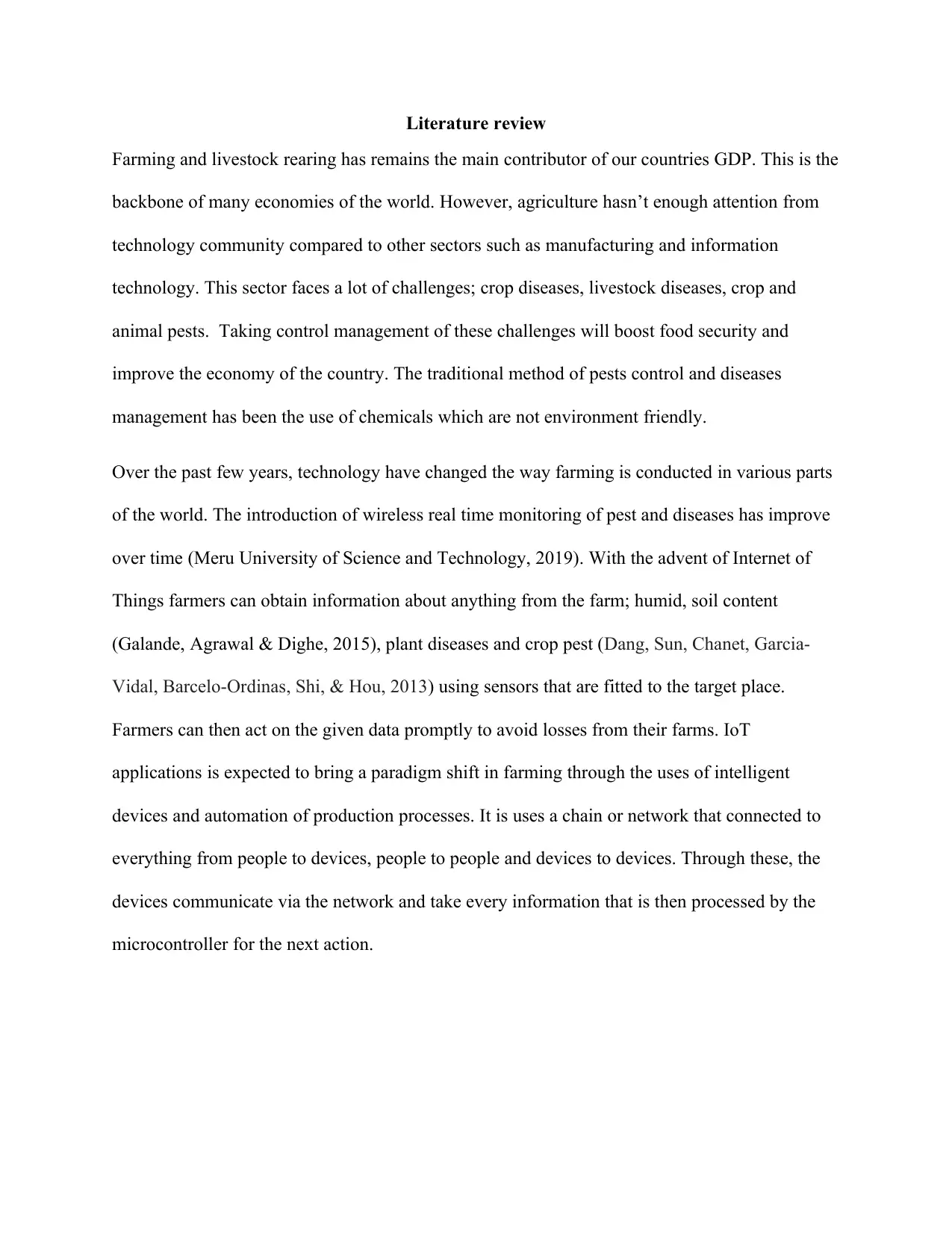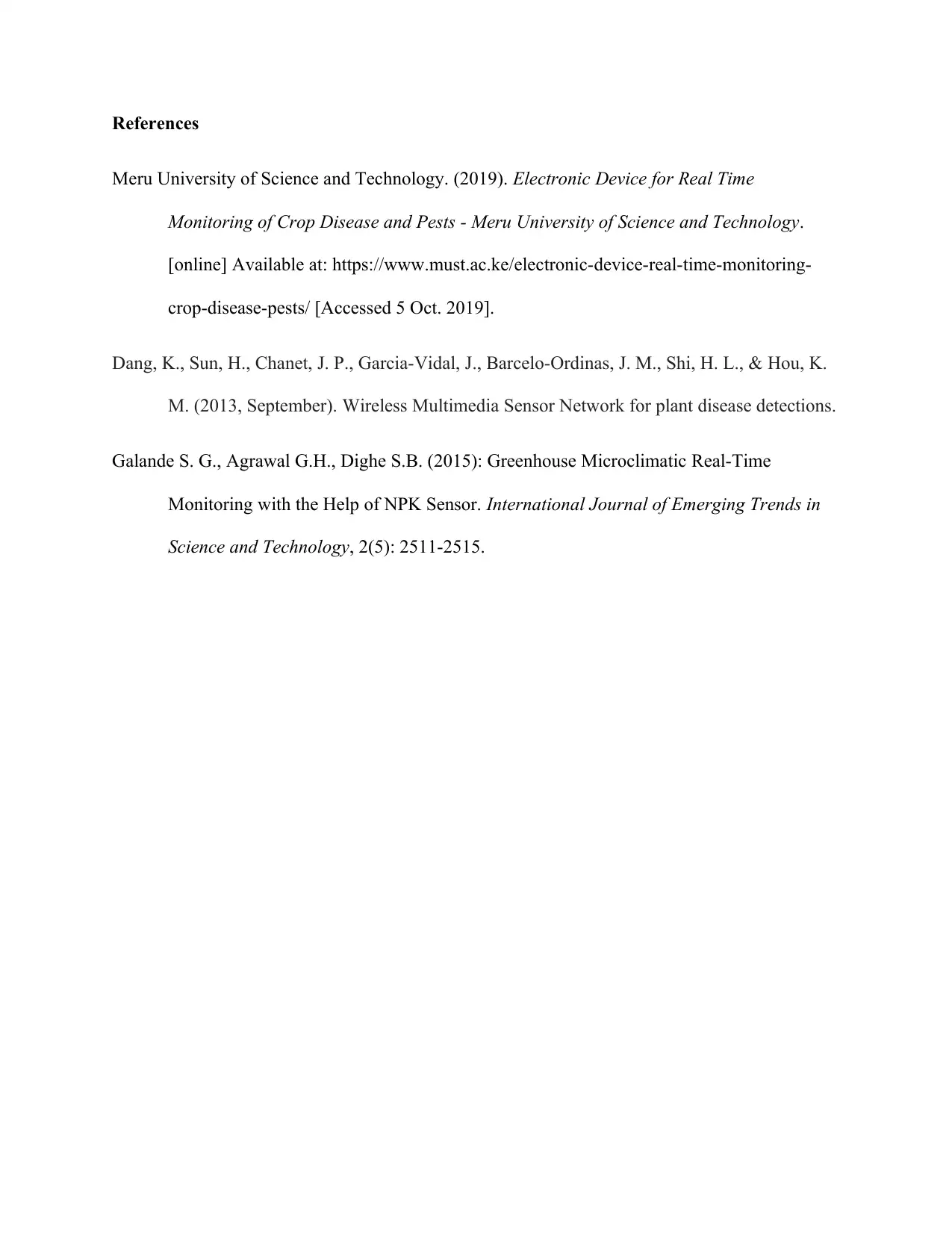Literature Review: IoT-Based Pest and Disease Control in Agriculture
VerifiedAdded on 2022/10/12
|2
|442
|171
Report
AI Summary
This report presents a literature review and project proposal focused on the application of Internet of Things (IoT) technology in agriculture, specifically for the control of pests and diseases affecting crops. The study emphasizes the challenges faced by farmers in India, including crop losses due to pests and diseases, and the limitations of traditional chemical-based control methods. The proposed system utilizes IoT devices, including sensors, to monitor environmental conditions, detect pest infestations and diseases, and transmit data to farmers via a cloud-based platform. The system aims to provide real-time information and mitigation measures to farmers, facilitating prompt action to minimize crop losses and improve food security. The research methodology includes content analysis, questionnaires, surveys, and interviews to gather and analyze data. The report highlights the potential of IoT to revolutionize agriculture by enabling precision farming techniques, improving crop yields, and reducing environmental impact. The literature review covers the current state of IoT applications in agriculture, focusing on wireless monitoring, data analysis, and smart farming practices, and proposes a system with a mobile app in the local language for ease of use. The project scope is limited to popular crops in India like tomato, vegetables, cucumber, maize, kales, and tea leaves, and targets farmers and administrative staff as the primary users.
1 out of 2


![[object Object]](/_next/static/media/star-bottom.7253800d.svg)